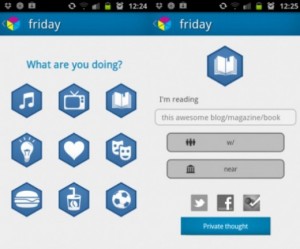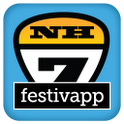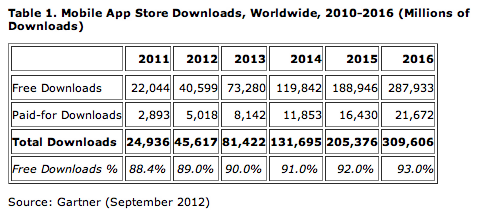What happens when six engineers with cushy corporate jobs decide to invest? And that too in a Whiteboard and an imported Smartphone. Yes, they grow up into mobile entrepreneurs creating android apps that millions the World over love. If you are reading this on an Android device, quickly search for “Friday” on the Play Store.
Today, we hear their story in an interview with the Chief Executive of Dexetra – Narayan Babu.
ProductNation: Welcome to Product Nation. We are really looking forward to hear your story. So please share all the excitement and emotion that you have gone through in your journey as a product entrepreneur.
Narayan: I was mentored by my Dad. My father used to be a CDAC Scientist (it was called ER&DCI then) and a member of the team that created Param – The First Supercomputer from India. So, Binary and Boolean Logic all came to me at an early age.
When I came into college after school, I realized that I could do technical stuff well. I could code and program, but I had no people skills for a startup. But I always wanted to do a startup like my father. So this startup was always playing at the back of my mind. While at college, I did create a portfolio of websites and apps (they were called applications then) but never made money as I hesitated to ask.
After college, I joined Bosch as an engineer. Bosch had an amazing culture and it gave me a nice view of the Corporate World. But it is a great place for the 9 to 6 crowd. The only problem – I did not find the work challenging enough. In three years at Bosch, I also found a good team. And it dawned on us that we better do something before growing old. So I pulled in two hackers from my college and two others from Bosch.
At that point in time, there was no idea. But we were all excited about doing a startup. So we began thinking, what to do?
Luckily, at that time Android was just announced. Incidentally, I was working on the WinCE and few other mobile platforms at Bosch. The platform was unwieldy and so I began experimenting with Android. The Android interface and features were just fascinating. At that time, Google conducted the android app developer contest and giving away US $ 100,000 as prize. We could not participate in the first edition, but it was a fascinating entry into the world of apps. We saw very simple apps being awarded US $ 50k and US $ 100k. We found it pretty cool and thought that we should do something around Smartphones.
Our first investment was in a Whiteboard, to brainstorm what all could be done on a smartphone. So, we listed down all the features of the smartphone and we realized that there were 7 – 8 data point sensors on a smartphone compared to almost no features in a desktop computer. And then in an “Aha” moment we thought we could do something using all those sensors – A diary of one’s life maybe. We really went crazy with the possibilities. Crazy because at that moment neither we had any smartphone nor there was any android phone available in the market.
Coming back to our senses, we decided to create a basic version and participate in the next Google App Developer contest. We only had a month and we were able to put together a crude version of it, and eventually we didn’t submit our app. When the winners were announced, we saw that most of the apps were very basic and not as grand as what we were thinking. This made us think if our idea was too grandiose. But, we worked on it and after two months of effort, we felt that we could pull it off.
ProductNation: What was the name you gave to this initial app?
 Narayan: First, we called it Chrone (for chronology) and then owing to the confusion with the Google product, we called it “Instinct”.
Narayan: First, we called it Chrone (for chronology) and then owing to the confusion with the Google product, we called it “Instinct”.
ProductNation: Ok. Please continue
Narayan: So, it was end of 2009 and we got our first android phone. It was an HTC phone with a 3.5 inch screen – a rare feature then. We ordered it from the US and specially took leave from office to receive the courier. And when tried running our app on it, it crashed. That is when we realized that emulator and the phone were different. So we had to work on the app, again.
Meanwhile, the android app marketplace had reached thousand apps or so. We decided to try something simpler. An android game which was a cross between pacman and Mario. We called it tintumon. And we launched that game. The app became popular, got 10,000 download and qualified for the Google Nexus One phone prize. It went on to do about 60,000 downloads. This was a big morale booster. That was when we started thinking about leaving our jobs and doing this full time. I had support from home and my other team members though concerned were way too excited about starting up.
This is when things got serious and we got our 6th founder. I reached out to one of our college mate who had done his MS and asked him to help us raise some money so that we could move into a place and leave our jobs. Basically he was the business guy we wanted in our tech team. He spoke about the app to a number of people and then finally an Investor who used to do only investments in rubber estates got really excited about it and put twenty lakhs into the business. So we quit our jobs and started Dexetra in April, 2010.
For a couple of months, we played around with all the mobile platforms – iOS, Blackberry, Android. We used to make apps, sell them for Free and also some for paid. One of our iOS games apps became the top 50 paid app in the App store. It was exciting. But it was time to focus on the main idea – Friday.
In the end of 2010, we shut down everything else and just focused on Friday. In two months we released the Alpha version and the users loved it. It was like SIRI but almost a year before SIRI. We got covered by Techcrunch and it was good fun speaking to all who covered us.
In this version, all the data was being collected locally on the phone. So the next step was to move all this data to the cloud. And we started working on the Friday cloud part. Quickly we realized that we had to build for scale. Since, we had been in a startup mode for close to a year, we understood issues of scale. So we consumed lot of information on scalable architecture to put it all together.
This was the time we met Vijay (Founder – One97). He instantly liked the cloud first version and the next day he signed the term sheet and put in a crore of rupees. This way we could recruit a couple of more guys into the team. Around this moment, the product was a little more than fifty percent ready. But in cases like this it is the last 20% that really takes the time.
ProductNation: Was that time when the Apple SIRI came by? Tell us about it and the eight hour SIRI bet.
Narayan: Yes. It was October 2012 when Apple launched SIRI. The World was touting it as the next big thing. We were irritated as we had been trying to put something together since 2009. And SIRI was not even close to what we had planned for Friday. But yes, conceptually similar.
Internally, we took up a bet to create an app exactly like SIRI in 8 hours flat. We managed a version and called it IRIS. It wasn’t for the public marketplace, but a tweet was picked up and it went viral. So we released it into the public marketplace. It got a million downloads in the first month, two million the next. Then, Micromax Aisha also leveraged IRIS.
IRIS becoming a sort of distraction and it was becoming hard to manage two entities. After spending a couple of man months, the team gathered itself and decided to focus most of its efforts into Friday. And it made good sense since we were just ten people then.
ProductNation: What prompted your team not to pursue IRIS?
Narayan: One, we were occupied with Friday. Second, for IRIS to scale, it needed a strong content pipeline. This would have entailed partnering with a number of content providers. All this meant a different set of skill sets. That doesn’t mean we gave up on iris, just that we put most of our tech energy behind Friday.
ProductNation: So, you guys got back to Friday.
Narayan: Yes. February 2012 end, we launched Friday beta on a closed basis. After four months of improvisation based on user feedback, we released it into the Android marketplace in July, 2012. Friday sees about 100 million documents in the cloud with a 30% daily user engagement.
ProductNation: What should we expect from Friday, going forward?
Narayan: We are focusing on making smartphones intelligent. We are making efforts to put context into smartphones with powerful software. e.g. your smartphone instead of showing “recently dialed numbers” should prompt you with the names of people depending on the context of location or time.
Those are the things we are working on. Plus we are working on building the UX as well. You would soon see a major new release on Friday.
ProductNation: Are you doing the UX internally?
Narayan: I am doing it myself, internally. It is challenging to get external UX guys working on a consistent basis. And UX needs sharp focus. And it has been painful to source UX guys. I have tried freelancers and outsourcing it to experts overseas. The problem of getting UX done outside the team, is to really get the job done. The creative guys are a different set altogether and they have a challenge adhering to timelines. Also, the external guys are not able to experience first-hand what is happening with the product. So, you need a UX person internally who can feel what’s happening.
ProductNation: Narayan, why the name Friday? Do you guys take off that day, is it?
Narayan: We wanted a simple one word name. We started with Chrone that came too close to Google Chrome. We tried Instinct. Then we hit upon Friday. It sounded crazy, it sounded bizarre, so it sounded good. ‘Friday’ sounded happy and it went well with the established meaning of “Man Friday”. And above all, it was easy to remember unlike the names of other apps, which you struggle to recollect at the right time.
ProductNation: What has been your learning’s during this journey? What would you like to share with an entrepreneur?
Narayan: We went all in. There was no plan B. We went all in with one plan. Many people ask us quizzically that you spent two years just building an app. But we did that and survived well too. It just makes sense to sell out to one meaningful idea.
I like the quote by Drew Houston, the founder of Dropbox – “It is better to fail than building a mediocre product”.
ProductNation: Before we let you go, would you like to share the complexity of your six-member founding team?
Narayan: Yeah. Investors used to express shock on the size of our founding team. Fortunately, inspite of having different backgrounds and personalities, all of us were excited about the startup. We do have differences but is mostly around the product. And most powerful bonding force is that all differences apart, we all want to build something really praiseworthy. This single thought ties all our efforts together.
ProductNation: Narayan, thank you for talking to Product Nation.
We wish the entire Dexetra team many more million downloads soon.










